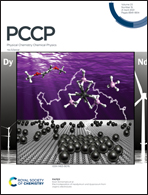The role of the three body photodissociation channel of water in the evolution of dioxygen in astrophysical applications
Abstract
A recent experiment at the Dalian Coherent Light Source (DCLS) has provided measurements of the partial cross sections for the photodissociation of water vapor over an unprecedented range of wavelengths in the vacuum ultraviolet (VUV) region. It was found that the three body dissociation channel, H + H + O(3P/1D), becomes prominent at wavelengths shorter than the Lyman α-line at 121.6 nm. The present work explores the kinetic consequences of this discovery for several astrophysically motivated examples. The irradiation of a dilute low-temperature gas by unscreened solar radiation, similar to early stage photochemical processing in a comet coma, shows significant increase in the production of O2-molecules at shorter times, <1 day, that might physically correspond to the photochemical reaction zone of the coma. Several examples of planetary atmospheres show increased O-atom production at high altitudes but relatively little modification of the equilibrium O2 concentrations predicted by conventional models.

- This article is part of the themed collection: 2021 PCCP HOT Articles


 Please wait while we load your content...
Please wait while we load your content...